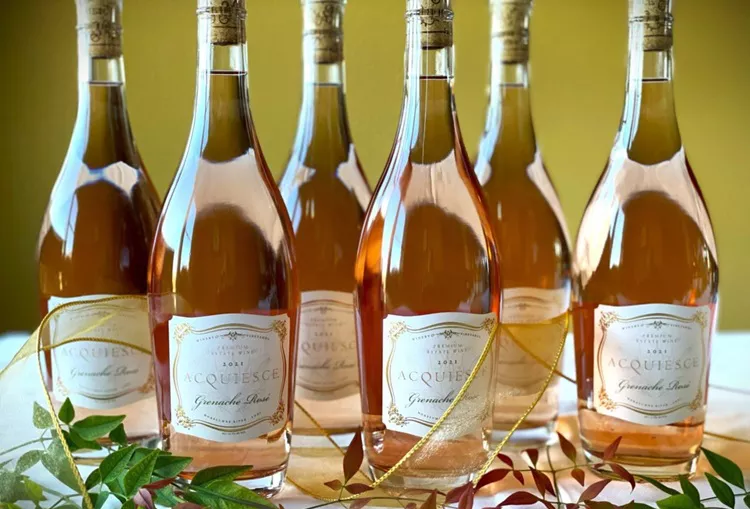Garnacha is one of the greatest grape varieties that doesn’t get the attention it deserves. Sommeliers and other wine professionals tend to hold it in high esteem, but among consumers it’s often overshadowed by more famous red varieties like Cabernet Sauvignon, Merlot, and Syrah. This couldn’t be further from the truth: not only are varietally labeled Garnacha wines capable of wonderfully complex flavors in places like California’s Central Coast and Spain’s Campo de Borja and Cariñena regions, but its role in legendary blends like Chateauneuf du Pape and Rioja can’t be underestimated.
To get the most out of Garnacha, and to learn about its contributions around the world, check out our guide to Garnacha below.
What is Garnacha wine?
Garnacha wine is produced in many countries, in a variety of styles. Its most famous version is the red variety, but Garnacha also plays a role in rosé wines. In most of the world it’s known as Grenache, or less often as Grenache Noir, but in Spain and other Spanish-speaking wine-producing countries it’s known as Garnacha. Whatever it’s called, Grenache/Grenache is a source of excellent red and rosé wines, either bottled alone or blended with other grape varieties. Grenache Blanc or Grenache Blanche is the white version of this grape variety, important in the white wines of Priorat, Spain, and the Rhône Valley (as well as the Southern Rhône) in France.
Where are Grenache wines produced?
Grenache is most commonly found in France and Spain. In France, it is one of the main grape varieties in the Rhône Valley and one of the 13 permitted varieties in Châteauneuf-du-Pape in the Southern Rhône Valley, where it often plays a prominent role. It also frequently appears in Rhône Valley red wines, giving them distinct cherry and undergrowth hay aromas. Not far from the Rhône Valley in Provence, Grenache is also a major component of the region’s famous rosé wines.
In Spain, Garnacha is widely grown in places like Campo de Borja and Cariñena (the name of the region, not the eponymous grape), and is a key component of the famous Rioja and Priorat red wine blends, where it’s often blended with Cariñena (also known as Carignan), Cabernet Sauvignon, and others. In California, it does particularly well on the Central Coast—producers like Bonny Doon and Sine Qua Non have strong ties to Garnacha—while in Australia, it’s found a happy home in McLaren Vale. In Sardinia, where it’s known as Cannonau, it also makes excellent red wines. Sweet wines from Maury and Banyuls in France’s Roussillon region are dominated by Garnacha. Given its ability to grow in warm climates, it’s no surprise that Israeli producers have also found success with it.
Why drink Grenache wine?
Wines made from Grenache have the potential to appeal to a wide range of wine lovers. For example, Newfound Grenache from Shake Ridge Vineyard in California’s Sierra Foothills is bright, vibrant, and exudes mouth-watering red berry flavors, while Herman Story “On the Road” Grenache is a more robust and luxurious expression. Both are excellent and accurate representations of the wide range of aromas, flavors, and textures that Grenache is capable of.
Grenache is also great with food. With its spice and herbaceous undertones, it pairs well with grilled meats, is a great accompaniment to fruit sauces, and can even be paired with pizza. The Australian GSM blend (Grenache/Syrah/Mourvèdre) is a classic for barbecues.
Beyond that, Grenache is a great lens through which to see the character of the place where it grows. Grenache picked from the famously rocky vineyards of the Châteauneuf region will behave completely differently than Grenache picked from the schist lands of Spain’s Priorat region. In a world of generally warmer temperatures, Grenache is proving to be a very good choice for these often challenging conditions.
What Does Grenache Taste Like?
Grenache wines are often based on bright cherry and berry notes. In warmer years, these fruit aromas can be very ripe and concentrated; it’s not uncommon for Grenache-based wines to be relatively high in alcohol and often have licorice notes. Grenache also has spicy aromas, blending well with Syrah or Tempranillo, and can have a dry or short, herbal character. Red Grenache wines are best served slightly below room temperature; 20 minutes in the refrigerator (assuming it’s not straight from a 55-degree cellar) will allow the fruit and spice to really come through.
Five Great Grenache Wines
There are countless great Grenache wines on the market today. The following five producers, listed in alphabetical order, are the perfect place to start.
Bonny Doon Vineyards
Founded in 1983 by Randall Grahm, Bonny Doon has been a leader in pure, expressive American wines since its inception. Le Cigare Volant, a Grenache blend from California’s Central Coast, is a reliable, premium wine.
Château d’Esclans “Whispering Angel” Rosé
This classic rosé, infused with the flavors of Grenache, has become one of the most popular Provence wines on the American market.
Château Lanerte
The cellar-reserved flagship of this esteemed Châteauneuf-du-Pape wine producer is based on Grenache, but also incorporates other important varieties from the appellation.
Clos Mogador
A top producer from Priorat, Clos Mogador’s namesake blends Garnacha with Carignan, Syrah and Cabernet Sauvignon to create complex, age-worthy wines.
Yangarra
Located in Australia’s McLaren Vale region, Yangarra is one of the country’s top Grenache producers. Its standout offerings include High Sands, Ovitelli and Hickinbotham Clarendon Grenache.
You Might Be Interested In:


